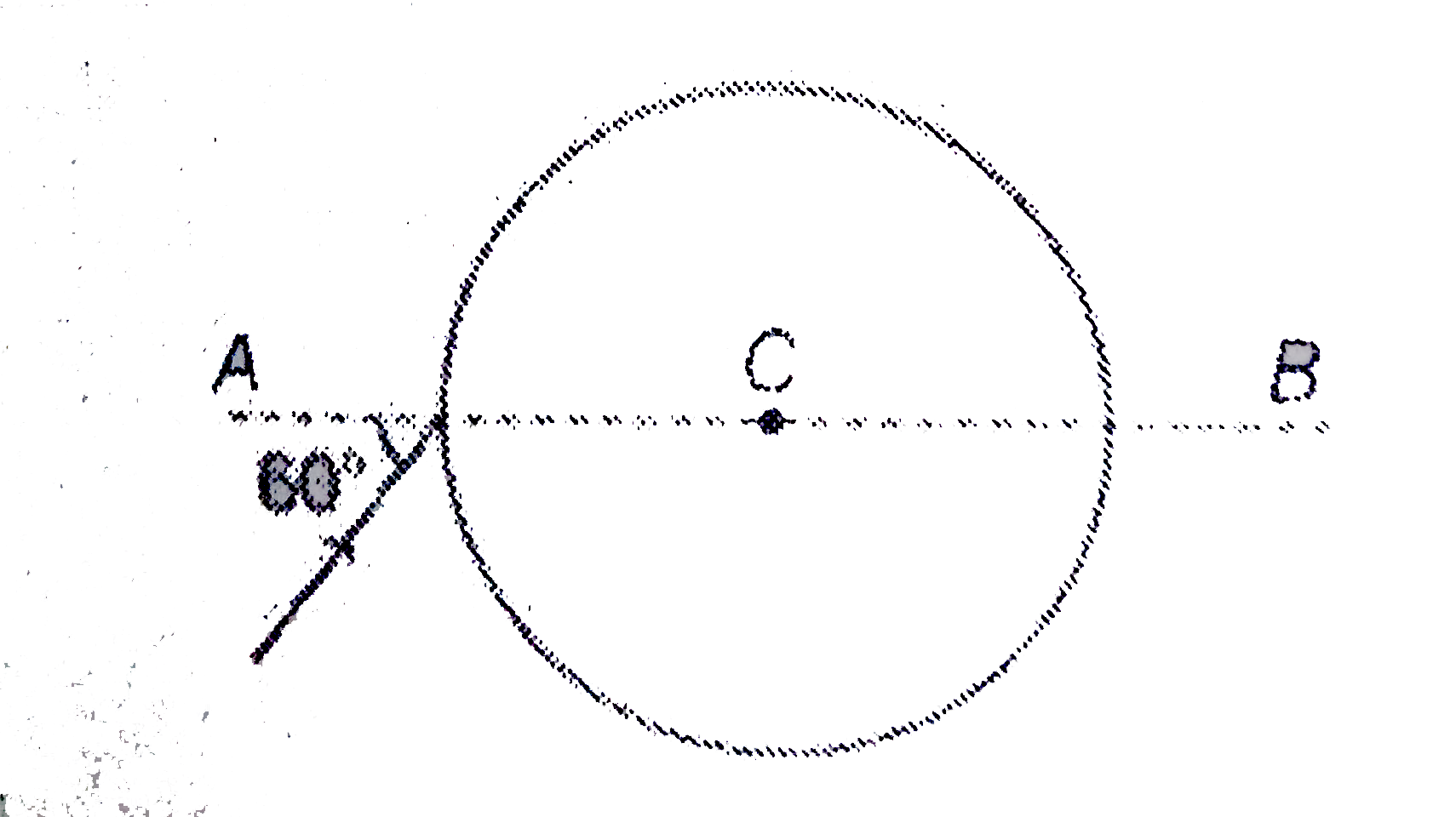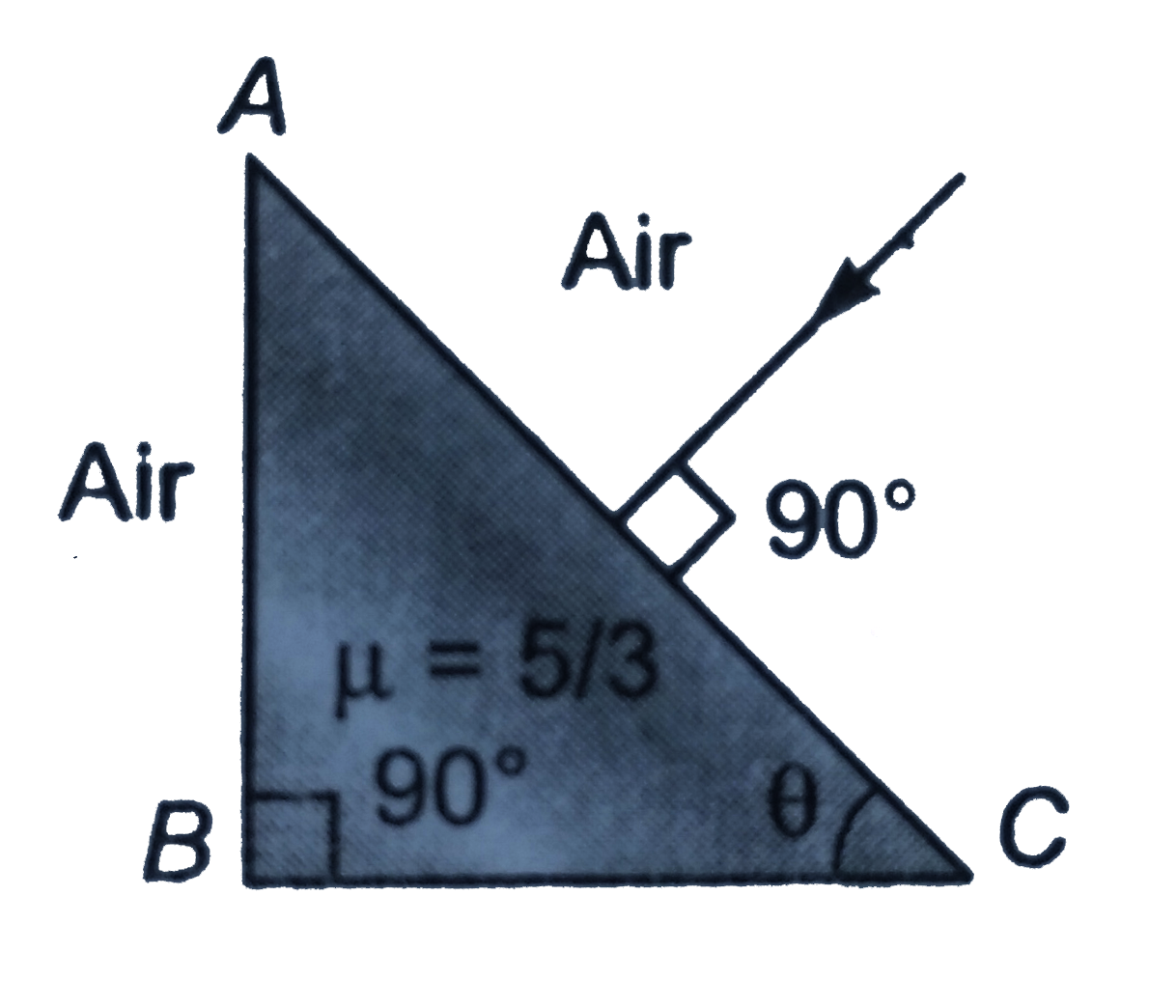Two light rays 1 and 2 are incident on two faces AB and AC on an isosceles prism as shown in the figure. The rays emerge from the side BC. Then, 
minimum deviation of ray 1>minimum deviation of ray2
minimum deviation of ray 1<minimum deviation of ray 2
minimum deviation of ray 1=minimum deviation of ray 2
cannot be determined
The correct Answer is:C
μ=sin(A+δm2)sin(A/2) ,
μ and A for both rays are same. Hence, value of δm
is also same for both rays.
Topper's Solved these Questions
- REFRACTION OF LIGHTBOOK - DC PANDEY ENGLISHCHAPTER - REFRACTION OF LIGHTEXERCISE - more than one correct option
1 Videos
- REFRACTION OF LIGHTBOOK - DC PANDEY ENGLISHCHAPTER - REFRACTION OF LIGHTEXERCISE - Level 2 More Than One Correct
4 Videos
- REFRACTION OF LIGHTBOOK - DC PANDEY ENGLISHCHAPTER - REFRACTION OF LIGHTEXERCISE - Level 2 Single Correct
41 Videos
- REFLECTION OF LIGHTBOOK - DC PANDEY ENGLISHCHAPTER - REFLECTION OF LIGHTEXERCISE - Subjective
9 Videos
- SEMICONDUCTORSBOOK - DC PANDEY ENGLISHCHAPTER - SEMICONDUCTORSEXERCISE - Subjective
12 Videos
Similar Questions
A ray of light incident normally on an isosceles right angled prism travels as shown in the figure. The least value of the refractive index of the prism must be

View SolutionA light ray is incident on face AB of a prism ABC as shown in figure. The second prims is ketp in such a manner the emergent ray from prism ABC is falling normally on face A'B' of prism A'B'C'. The net deviation by optical system two prisms is (8k) degree. find the value of k.

View Solution
Knowledge Check
A rays of light is incident on a thick slab of glass of thickness t as shown in figure. The emergent ray is parallel to the incident ray but displaced sideways by a distance d. If the angles are small then d is
 At(1+ir)Brt(1−ir)Cit(1−ri)Dt(1+ri)
At(1+ir)Brt(1−ir)Cit(1−ri)Dt(1+ri)
A ray PQ incident on the refracting face BA is refracted in the prism BAC as shown in the figure and emerges from the other refracting face AC as RS such that AQ = AR. If the angle of prism A=60∘ and the refractive index of the material of prism is 3^1/2, then the angle of deviation of the ray is

View SolutionA ray of light falls on a transparent sphere with centre at C as shown in figure. The ray emerges from the sphere parallel to line AB. The refractive index of the sphere is

View SolutionA ray of light falls on a transparent sphere with centre at C as shown in figure. The ray emerges from the sphere parallel to line AB. The refractive index of the sphere is

View SolutionA light ray is incident normally on the face AB of a right-angled prism ABC(μ==1.50) as shown in figure. What is the largest angle ϕ for which the light ray is totally reflected at the surface AC ?

View SolutionA ray of light mekes normal incidence on the diagonal face of a right angled prism as shown in figure. If θ=37∘, then the angle of deviation after second step (from AB) is (sin37∘=3/5)

View SolutionAssertion: White light is incident on face AB of an isosceles right angled prism as shown. Colours, for which refractive index of material of prism is more than 1.414, will be able to emerge from the face AC.

Reason:Total internal reflection cannot take place for the light travelling from a rarer medium to a denser medium.
View SolutionAt what angle, a ray of light should be incident on the first face AB of a regular glass prism ABC so that the emergent ray grazes the adjacent face AC ?

View Solution
